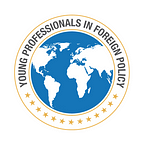Taking a Look at the Financials: How to Solve the Humanitarian Situation in Yemen
By Pierrepont Johnson
Mark Lowcock, the humanitarian affairs and emergency relief coordinator for the United Nations, is tired of sounding like a broken record during his monthly Security Council briefings.
Every month, I update the Security Council on the humanitarian situation in Yemen. Today marks my fifteenth briefing and the thirty-sixth you will have heard since 2015. My experience is like that of the main character in the hit Hollywood movie Groundhog Day…every morning, he wakes up back where he started.
Lowcock knows the severity of the situation far too well — a crisis where more than 24 million people require humanitarian aid. While a political solution is the only way to end the conflict, an economic solution can save millions of Yemenis in need of assistance.
The economic costs of war
The war started in 2015 when a rebel group called the Houthis, feeling empowered by the Arab Spring, opposed president Abrabbuh Mansour Hadi’s proposal of dividing Yemen into six subregions. Tensions were high from problems of corruption, unemployment, and food insecurity. Eventually, the rebels took the capital, Sana’a, which they control to this day.
Before the war, Yemen was already the poorest country in the Arab world. And it is well known that the war has only exacerbated the country’s existing problems, with over 10 million people relying on food aid. A lack of access to critical ports has also been a large part of the problem, as the country imports more than 90 percent of their food supply. Moreover, rising inflation has only made matters worse, as $1 is now worth approximately 560 Yemeni rials (compared to YER400 at the end of last year and YER215 before the crisis). Food prices have also soared, making a loaf of bread unattainable for many Yemenis. Import restrictions have reduced oil imports by 70 percent and medical imports by 50 percent. Scarcity leads to inflation, while increased oil prices make driving more expensive. Now, many families cannot afford to drive to the nearest hospital, let alone afford treatment once they arrive.
Remittances have also been reduced and are responsible for up to 25 percent of Yemen’s gross domestic product, placing a higher economic burden on families. The division of the Yemeni central bank, which occurred after the Houthis took Sana’a, has further complicated the financial situation by depreciating the country’s currency and reducing imports. Currently, it is almost impossible to pay government workers, and the purchasing power of citizens and public institutions is diminished. And to make matters worse, over 30 percent of school-aged children are not attending school.
So, what is the problem?
Ultimately, a lack of resources is at the root of the humanitarian crisis in Yemen. Lowcock stated that $4.2 billion in relief funds were needed for 2019; however, $2.6 billion was pledged, and only $1.15 billion has been received so far this year. U.N. member states must hold each other accountable and follow through with their pledges. Member states should also make individual contributions to ease the economic burden. Not because it is the right thing to do, but because it is in their interest from an economic, security, and environmental standpoint. For instance, Yemen needs resources for the decaying SAFER tanker, currently controlled by the Houthis. If the tanker explodes, it could lead to an ecological disaster, close essential shipping lanes, and harm the global economy. Stabilizing the economy will improve political stability and increase security in the Gulf.
Funds are also needed to shore up the Yemeni central bank. For instance, last year, Saudi Arabia pledged $2 billion to the central bank, but much more is required. Increased reserves will reduce inflation, increase cash flow, pay public sector salaries, and allow for investment in the private sector. Finally, reserves grant the bank the ability to exercise countercyclical fiscal policy, which can be a rainy-day fund that could prevent Yemen from falling back into a recession after the war. In essence, an increase in cash inflows can reduce the severity of the humanitarian crisis. This can either be achieved directly by supporting humanitarian efforts through the United Nations and various non-governmental organizations or indirectly by increasing central bank reserves. Making sure these resources get into the right hands can be a challenge, as with many conflicts, but it is a risk worth taking.
Conclusion
Gone are the days of simple conflicts between good and evil. Instead, modern-day, wars are fought by proxies — and Yemen is no exception. Saudi Arabia, the UAE, the United States, and many other countries are involved in this conflict, and the justness of either the Houthi or government forces’ cause remains unclear. With Al Qaeda and a growing Southern secessionist movement now in the mix, the political situation gets even murkier. An economic solution might be the least complicated short and long-term solution to the humanitarian situation in Yemen.
Pierrepont Johnson is a freelance journalist who holds a dual master’s degree from Fordham University in International Political Economy and Development, and Economics. He also holds a Bachelor of Arts in International Relations from Rollins College. He most recently worked with the Independent Diplomat on their new Yemen project, which helps provide a political voice to Southern Yemenis.
Photo courtesy of Wikipedia.
